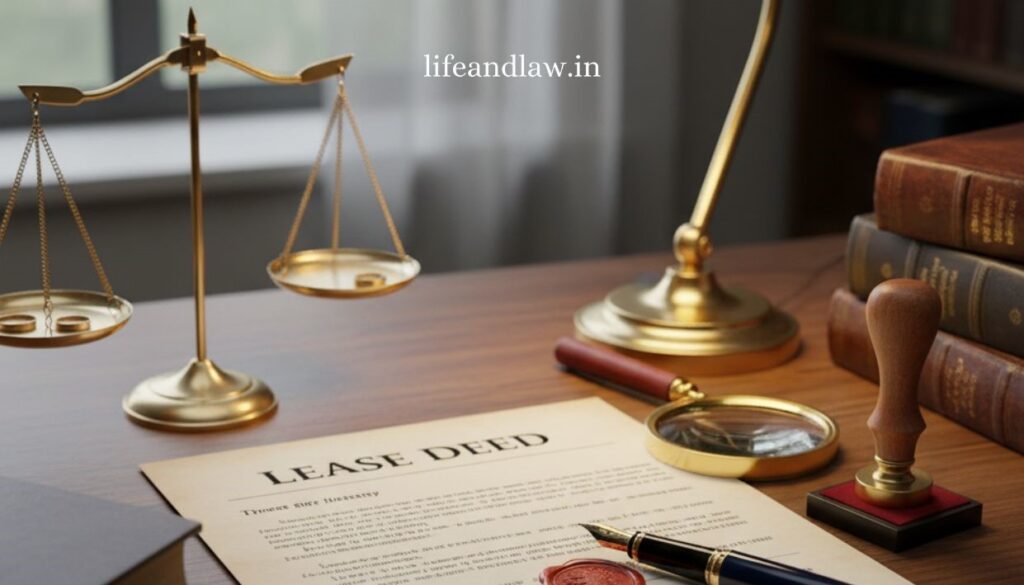Trending

A lease agreement is an important document in today’s property transactions. Tenants and businesses frequently neglect the need of fully comprehending the conditions before signing, which leads to disagreements and legal concerns. A lease agreement is more than simply a formal document; it establishes both parties’ legal rights and responsibilities
The Indian Transfer of Property Act, 1882, namely Sections 105–117, outlines and elaborates on the leasing procedure, detailing responsibilities, obligations, and conditions. To avoid future problems, it is critical to understand and carefully study the agreement, recommend required changes, and double-check legal details. This article informs readers about the main aspects and safeguards of lease agreements.
A lease of immovable property is giving the right to use a property for a set or indefinite duration in exchange for payment, which might be cash, services, or any other valuable thing. It does not transfer ownership; merely possession.
Lessor: transfers the lease.
Lessee: accepts the lease.
Premium: lease payment is made only once.
Rent: periodic payments in cash or kind.
Competent Parties: Both parties must be legally able to enter into a contract, which means they must be of legal age (18 or older) and mentally healthy, according to the Indian Contract Act of 1872.
Right of possession: A lease conveys possession but not ownership. The lessee receives the right to utilise the property, but ownership remains with the lessor.
Rent: Rent is an essential part of the lease, acting as compensation for utilising the property. The lease must include the rent amount, payment frequency, and method.
Acceptance: The lessee must agree to the terms—duration, rights, and obligations. The conditions and obligations should be mutually agreed upon.
Time period: The lease must provide a specified duration. If undefined, Section 106 considers agricultural/manufacturing leases year-to-year and others month-to-month.
Maintenance: The agreement should specify who is liable for repairs, maintenance, taxes, and insurance. Unless otherwise specified, the tenant is usually responsible for these.
Term of Lease: This determines the lease’s duration. At the end, the lease might be renewed or terminated. Section 107 requires registration for leases lasting one year or more.
Ownership: The landlord retains ownership of the property throughout the lease term. The tenant merely has usage rights.
Termination: Leases expire after the stipulated period, or earlier if permitted by the agreement. Proper notice is necessary, with the return terms clearly stated.
Renew or Purchase: Some leases include possibilities for renewing or purchasing the property. These must be explicitly outlined in the contract.
If there is no written agreement, the period will be established as follows:
Agricultural/Manufacturing Leases: Considered year-to-year; can be terminated with six months’ notice.
Other Leases: Considered on a monthly basis;15-day notice is required.
The notification period begins on the day it is received. Even if the notice period is shorter, it may be considered valid in legal procedures. Notices must be in writing and sent via mail, directly, or through family/household members. If this is not possible, it can be posted on the property.
Leases lasting a year or more and including annual rent must be registered. Others may be oral, with possession delivered. A registered lease must be signed by both parties. The State Government may exclude certain leases from registration or possession delivery by issuing an official notification.
Check Document Authenticity: Check the owner’s identity and property paperwork (title deed, ID evidence) to avoid future ownership problems.
Compare Prices: Make sure the rent is in line with market pricing. Paying more than is necessary can cause long-term financial pressure.
Check Property Condition: Inspect walls, doors, water, electrical and gas connections to minimise unexpected repair expenditures later.
Carefully read the terms of the agreement: Examine the terms governing rent, payments, duration, maintenance, and termination. Understand the notice period and any special provisions.
Get Legal Advice: If the terms are unclear, seek a legal professional. Adv. Abdul Mulla at www.asmlegalservices and www.lifeandlaw.in can offer experienced advice, assisting in the prevention of future legal or financial problems.
Clarity of Writing and Language: The lease should be written in clear language, without legal jargon. To avoid confusion, all terms, rents, duties, and durations must be properly specified.
Check the Possibility of Rent Increase: Ensure that rent escalation clauses are clear—when, how much, and under what conditions will the rent increase.
Address Emergency Situations: Include terms addressing exigencies that may prevent the lease from being fulfilled, as well as the ability to change or terminate under such circumstances.
Check the Termination Clauses: These must specify the lease’s termination circumstances, the mandatory notice time, and any fines.
Decide the Terms of the New Agreement: If renewal is possible, negotiate a new rent, length, and other pertinent parameters. Both parties’ rights and responsibilities should be clearly specified.
Before signing a lease, make sure to verify paperwork, review all conditions, and understand your rights and duties. This promotes transparency, minimises future conflicts, and protects your interests during the lease term.
Legal guidance is essential for drafting a good lease. Consulting with property law professionals, such as Adv. Abdul Mulla at www.asmlegalservices or www.lifeandlaw.in can help you avoid legal and financial issues.
Adv. Abdul Mulla (Mob. No. 937 007 2022) is a seasoned legal professional with over 18 years of experience in advocacy, specializing in diverse areas of law, including Real Estate and Property Law, Matrimonial and Divorce Matters, Litigation and Dispute Resolution, and Will and Succession Planning. read more….
Copyright BlazeThemes. 2025